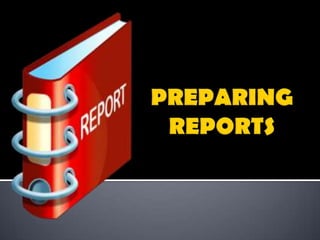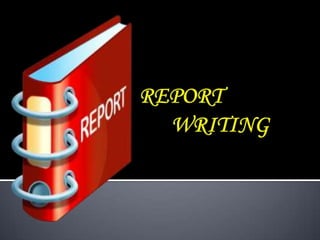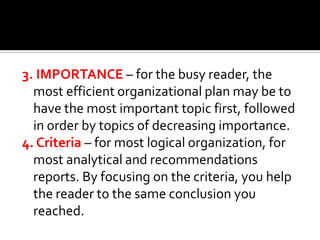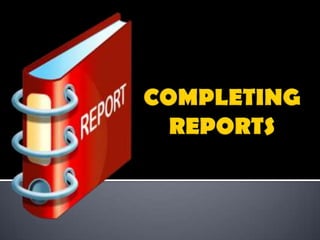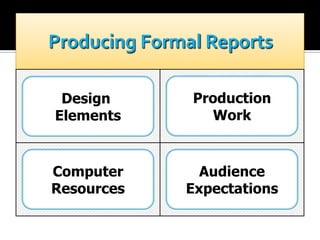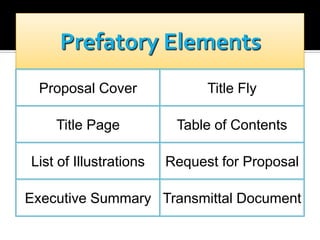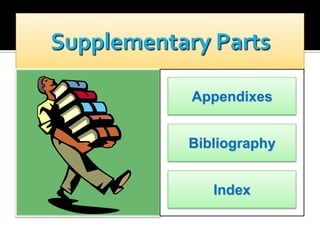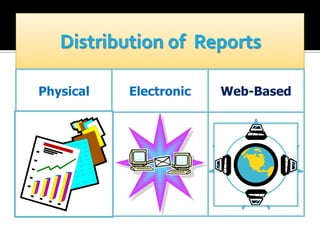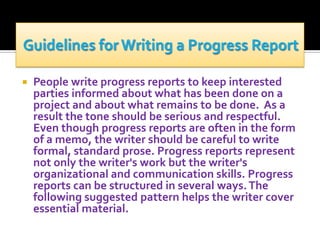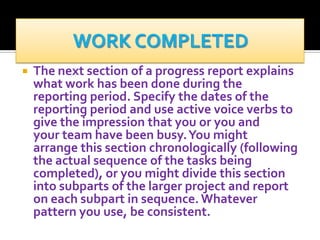A progress report informs interested parties about the status of a project. It covers what has been completed and what remains to be done. Progress reports are formal documents written in a serious tone. They follow a standard format including a date, names of sender/receiver, subject, background on the project, work done in the reporting period, any issues encountered and their resolution, and a schedule of upcoming work. The goal is to concisely but thoroughly update the reader on the state of the project.
